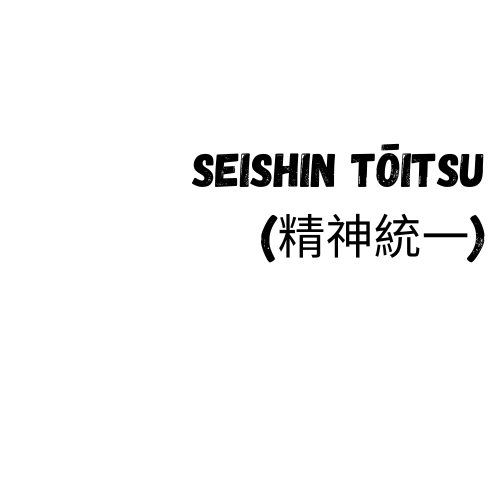Seishin Tōitsu

Unifying the Mind Through the Hara
In Reiki practice, presence is everything.
When the mind is scattered or distracted, Reiki cannot flow deeply. But when our awareness is gathered and centered, especially in the hara, the energetic center located just below the navel we become grounded, open, and receptive. From this place, healing unfolds naturally. This gathered state of awareness is called Seishin Tōitsu (精神統一). Often translated as "concentration," a more accurate understanding is “unification of the mind and spirit.” This is not about mental effort or intense focus it’s about integration. It’s about returning inward, aligning the breath, the body, and the mind into one coherent presence.
What Does “Seishin Tōitsu” Mean?
Let’s explore the components of this phrase:
- Sei (精) – essence, spirit
- Shin (心 or 神) – mind, heart, consciousness
- Tōitsu (統一) – unity, integration, harmony
Altogether, Seishin Tōitsu means:
“The unification or integration of the mind and spirit.”
This state is cultivated across many traditional Japanese practices, including meditation, martial arts, and the healing arts. In Reiki, it is essential—not something separate from practice, but the very ground it rests upon.
Why Seishin Tōitsu Matters
In modern life, much of our attention is pulled upward and outward into our thoughts, our to-do lists, our worries. In this state, our energy becomes fragmented. The mind overworks, and our presence thins out. Seishin Tōitsu brings us back to center. It invites the mind to soften, the breath to deepen, and the awareness to return home your center.
Through this practice, you:
- Release mental tension and restlessness
- Root your awareness in the body and breath
- Deepen your receptivity to Reiki
- Become a still, open vessel through which energy can naturally flow
This is not something to force. It is something to allow.
It emerges through consistency, sincerity, and simplicity.
How to Practice Seishin Tōitsu
This practice is often done sitting quietly, either as a stand-alone meditation or in preparation for a Reiki session. It may also naturally arise during a treatment, especially when the practitioner returns attention to the hara, or belly
Simple Seishin Tōitsu Practice:
- Sit comfortably with your spine upright but relaxed. Place your hands in your lap or on your lower belly.
- Close your eyes and bring awareness to the breath, without controlling it.
- Gently focus on your hara, the area just below and behind the navel. Let your attention rest here like a stone settling in water.
- As you breathe, allow the breath to move in and out of this center, not physically, but energetically.
- If thoughts arise, acknowledge them and let them drift away. Keep returning to the breath and the sensation of awareness in the hara.
- Continue for 5–15 minutes, or longer if you wish.
With time, you may feel a sense of inner stillness, calm, and quiet radiance growing within.
What You May Experience
As you begin to integrate this practice into your Reiki path, you may notice subtle but profound shifts in your inner state:
- A sense of groundedness and stability
- A quiet mind and steady breath
- A felt presence in the hara or lower belly
- A natural, effortless state of receptivity
- Less mental “noise” and more intuitive awareness
This is the quality of mind that allows Reiki to flow fully unhindered by trying, planning, or performing.
When to Use Seishin Tōitsu
| Moment | Why It Supports You |
|---|---|
| Before Reiki practice | Centers and quiets the mind |
| During a Reiki session | Helps stay present and connected |
| After emotionally charged moments | Allows a return to calm and coherence |
| During daily meditation | Deepens stillness and internal focus |
| Anytime you're ungrounded | Brings attention back to hara and present time |
The more often you return to this state, the more naturally it becomes your way of being not just in Reiki, but in daily life.
Not a Technique, But a State of Being
Seishin Tōitsu is not a trick to master or a performance to perfect.
It is a simple return. A remembering of the quiet, unified awareness already present beneath the surface of distraction. When we drop down from the head into the body, when we let the breath guide us back to the center, we return to our natural state of integration. From this place, Reiki does not need to be pushed. It flows.
Final Reflection
In this practice, you gather your mind not to tighten it, but to let it rest.
You breathe, not to control the energy, but to allow it to move freely.
You return, not to escape the world, but to move through it with presence and peace.
Just for today... come back to center.
Let the breath unify your being. Let Reiki flow